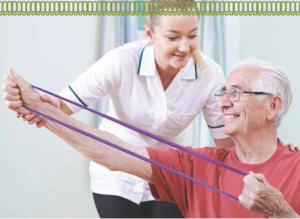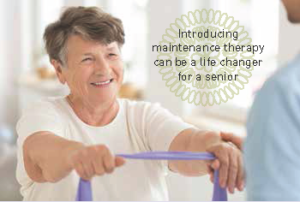There are no fool-proof maps than can show the best way to care for an elderly parent. But there are some common “potholes” that can make the road difficult to travel. To help you on your caregiving journey, here are five more common errors adult children make in taking care of their elderly parents.
1. Not Taking Fall Hazards Seriously
There are many simple modifications you can make at home to reduce the risks of falls: eliminate throw rugs, keep walkways clear, improve lighting, install grab bars next to your toilet and in tub or shower, keep commonly used items at an easily reachable height, and make sure stairways have handrails. Encourage your loved one to turn on a light when using the bathroom at night, and make sure hallways and stairways are well lit. It is also a good idea to have a licensed occupational therapist do a home safety evaluation. Of course, one of the best ways to protect from falls is to maintain your strength through routine exercise and balance training. Physical therapists provide tremendous support in helping seniors stay fit, balanced, and safe in their homes.
2. Not Planning Ahead
If you have a parent who is beginning to experience a significant decline in health and functioning, it is important to make a plan. Anticipate increasing need for help in the home, and discuss different ways for meeting those needs. It is a good idea to call a family meeting and discuss all available resources, recognizing that more and more help may be needed as time goes on. Make a plan BEFORE a crisis hits. It can be awkward to discuss at first, but no one thinks clearly in an emergency.
Read More»
 Have you ever needed physical or occupational therapy (PT/OT)? Conditions that cause decreased strength, range of motion, balance deficits, difficulty with walking and memory issues are leading reasons seniors might need therapy. Most therapy is based on a model that requires patients to meet certain qualifying criteria. Typically, a person must demonstrate measurable, skilled progress or the therapy provider is required to discharge. Over the course of the last decade, a new option for wellness and exercise has become increasingly available to Minnesota seniors!
Have you ever needed physical or occupational therapy (PT/OT)? Conditions that cause decreased strength, range of motion, balance deficits, difficulty with walking and memory issues are leading reasons seniors might need therapy. Most therapy is based on a model that requires patients to meet certain qualifying criteria. Typically, a person must demonstrate measurable, skilled progress or the therapy provider is required to discharge. Over the course of the last decade, a new option for wellness and exercise has become increasingly available to Minnesota seniors! Mary had a massive stroke at 68. She was left with an inability to walk, difficulty with speaking, and decreased movement on the left side of her body. After completing rehabilitation in the hospital, then a care facility, she was able to return home with her husband, Ed. She also qualified for Medicare home therapy. When Mary was no longer considered home bound, she transitioned to an outpatient clinic. Mary was very motivated to get better, but this proved more difficult than imagined. It was hard to be disciplined in completing the home exercises her therapists assigned. Ed began to notice declines, despite Mary going for therapy twice a week. They were disappointed in her regression. It was time for a change. She wanted home therapy that focused on the tasks and activities that were important to her and allowed them to be in control of her rehab. Thanks to a recommendation from a trusted health care worker, Ed inquired about direct-pay, maintenance therapy.
Mary had a massive stroke at 68. She was left with an inability to walk, difficulty with speaking, and decreased movement on the left side of her body. After completing rehabilitation in the hospital, then a care facility, she was able to return home with her husband, Ed. She also qualified for Medicare home therapy. When Mary was no longer considered home bound, she transitioned to an outpatient clinic. Mary was very motivated to get better, but this proved more difficult than imagined. It was hard to be disciplined in completing the home exercises her therapists assigned. Ed began to notice declines, despite Mary going for therapy twice a week. They were disappointed in her regression. It was time for a change. She wanted home therapy that focused on the tasks and activities that were important to her and allowed them to be in control of her rehab. Thanks to a recommendation from a trusted health care worker, Ed inquired about direct-pay, maintenance therapy.











